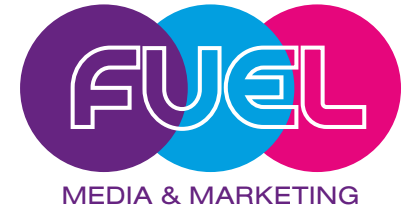There has been much written recently about Inventory Media, and how it has assumed a significant position in client media choices.
Nick Manning, of Encyclomedia, recently laid out the facts and reached well drawn conclusions that participating clients should know. Nick’s key conclusion is that client trust in their agencies’ business practices are at risk.
Fuel Media & Marketing suggest that clients may wish to dig even deeper.
To do that we should summarise the background into the relevant steps. These can be described in the following way:
Step 1. Many years ago the best agencies decided to aggregate their clients’ negotiating volumes in order to generate advantage in the TV and print markets initially. Typical leverage outcomes would have included a competitive share of premium break slotting and/or programme type slots.
In time inventory transactions introduced Step 2. Discounted pricing. Agencies were juggling and allocating advantage to clients based on importance (often subjectively decided).
Step 3. In today’s market we have a straightforward situation whereby agencies are broking that inventory derived media, the agency is trading in media they have not yet sold, or planned to sell. A mix of volume-based extras/premium advantage and cleared media bought at discount. The pool of inventory media is then presented to clients as a discounted package of media.
As we step back and make a judgement, we use a simple analogy. Would you buy a discounted family house in the wrong city? In other words discount and cheap can only have value if applied to the media you need in the first place.
Let’s pause there, and assume that we are an advertiser poised to assess an offer to buy inventory media for all the right reasons. Clearly at the end of your assessment, and once you have established all strategic issues are satisfied, what is the point of agreeing if you can’t be sure of the discounted value? Perhaps as important to any or all of the agency’s clients is fairness of treatment. As we have discussed above a part of the Inventory media construction is a component that has been generated by client aggregated volume. Leverage of volume is not unique to media.
It is obvious that a client that contributes volume to the overall agency volume and that does not ultimately participate in the Inventory Media distribution, is losing out. In simple terms: Client A is subsidising Client B.
Not only trust is at stake. The follow on, that of overall fairness of the distribution of the negotiating power, might be skewed dramatically in favour of specific clients. Those with auditors, those with bonus schemes, significant blue-chip advertisers, those coming up for contract renewal or pitch.
So how can agencies overcome this perception of inequality in value distribution that, in straight talk, is the result of broking media with other people’s money?
Advertisers should incorporate the following factors into their media planning scenarios
#1 Ensure that the implied media placements’ audience deliveries are consistent with your overall strategies.
#2 Don’t expect full transparency, and for a good reason. Of course, whatever the wholesale price of the inventory media units, and despite calls for greater insight into the agency’s margins, clients will undoubtedly have agreed to their own personalised media value position guaranteed by the agency. That must lead the clients’ perceptions of how they might approach the inventory media offerings. We suggest this key fact should override any calls for that greater insight into operating margins. Even the seemingly reasoned request for more equitable distribution of the inventory component that includes volume bonuses/value pots [the free part of the inventory] generated via the overall agency volume to which all clients contribute, should be parked.
Clearly deeper insight to the wholesale price and indeed the volume derived aspect would be revealing, but the client trust factor is best focused, initially on delivery of each client’s own personalised value agreement.
#3 The agency needs to cooperate to demonstrate the market competitiveness of the Inventory price. In order to do this you are likely to require an independent third party expert.
#4 Be absolutely clear that non-conforming media placements have no value even as make-goods.
AND for clients that have declined participation in the Inventory Media offer – Fuel Media & Marketing suggests a single question:
“Where is my extra value considering the agency has aggregated its overall volume for advantage and sold it all on to participating clients to my exclusion?”
The bottom line must be for advertisers to insist on a share of the benefits of all the aggregated clout an agency has to manipulate. After all, advertisers bought into the agency volume arguments during the pitch.
Fuel Media and Marketing is a leading specialist communications consulting company. Our teams advise clients in the field of media communications. To find out more on how Fuel can help, contact Oli on +44(0) 7534 129 097 or email oli@fuelmediamarketing.com.

